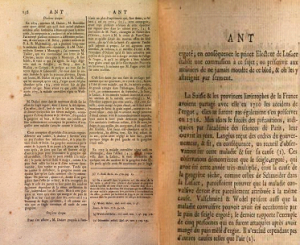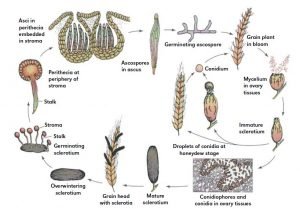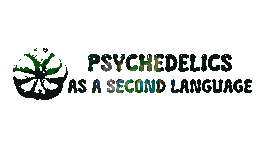Ergot: From Iberian Ergot Markets to LSD renaissance
The boom in the psychedelic industry brought plenty of eyes to the scene of psychoactive compounds. Plenty of us are either curious or willing to try a psychedelic, whether recreationally or as a method of therapy.
One of the many psychedelics that never stopped being the must-try psychedelic would have to be LSD, gaining its fame from authors such as Albert Hofmann (also known as the father of LSD), Timothy Leary, and most recently gaining track with the MKUltra project.
Everyone who is street-savvy or has seen enough movies/series knows that LSD is usually consumed in blotter paper with fine art or dropped to our mouths via a pipette, but where does LSD come from? Is it purely synthetic, or does it have a natural origin?
To answer this, we would have to delve not only into the history of LSD itself but also the fungal history of a dancing plague. To answer this, we would have to delve not only into the history of LSD itself but also the fungal history of a dancing plague with one common element, Claviceps purpurea.
Claviceps Purpurea is an ergot fungus that commonly grows in rye and cereals. Once upon consumption of the infected cereals or grains, this fungus will lead to a known disease in history, ergotism.
During the Middle Ages (500 to 1500 CE), there were various noticeable reports caused by ergotism, such as the Dancing Plague in France in 1518 and the Plague of Holy Fire, giving ergotamine the nickname St Anthony’s Fire due to its effects.
Ergotism ended up killing thousands during the Middle Ages. Its symptoms were jarring. People would experience convulsions, seizures, spasms, diarrhea, paresthesia, severe itching and burning sensation (hence, its nickname St. Anthony’s fire), headaches, nausea and vomiting, and mental effects such as hallucinations, mania, and psychosis.
In severe cases, it can cause edemas and dry gangrene due to vasoconstriction caused by the Ergotamine and Ergocristine alkaloids present in the fungus and, in many cases, death.

So, why not remove ergot from infecting these cereals?
The answer would be the impoverishment during that era and poor harvests. Removing the fungus from rye would mean removing parts of the cereal, leading to less product for consumption and less product to sell. Every piece of rye and cereal would be quintessential for surviving that period. This way, ergot found its way to the most consumed product in that era, bread.
As early as 1095, ergot had already been haunting the population. To aid those suffering from symptoms, the order named after Antony of Egypt was funded, thus giving ergotism the popular name of Saint Antony’s Fire. However, several centuries were yet to pass by before ergot became a suspect of this condition.
Another case would be the famous Dancing Plague of 1518 in France. Such an event brought attention to plenty, for the unusual fact that somewhere around 40 to 500 people took dancing for weeks. Some historians believe that this event could be a psychogenic illness triggered by anxiety, religious fervor, or other psychological factors. However, the mania might have been caused by ergotism.
However, one of the most impactful and disquieting outbreaks would occur centuries later after the foundation of Antony of Egypt, in 1951, in the small town of Pont-Saint-Espirit, France. The news spread fast throughout the world, disquieting plenty of Europe with the stories of Hallucinations, convulsions, delirium, and death from ergotism.

Yet, during this time, it was unknown what caused the disease, and the first trustworthy connection between ergotism and ergot was by Denis Dodart in 1676. However, his belief didn’t become widely spread. Consequently, the poisoning continued to spread worldwide.

Ironically, despite the adversities caused by the fungus, people found a positive use for Ergot, and it became part of the European culture to speed up labor and control postpartum hemorrhage. Such practice was forgotten until the 19th century when John Stearns started drawing attention to doctors and obstetrics about the clinical use of Ergot. However, in 2000, a European Consensus concluded that ergotamine is not a drug of first choice. Contrary to the European view on the drug, an American review of 2003 suggested that ergot alkaloids may be considered in the treatment of selected patients with moderate to severe migraine. Thus, dihydroergotamine is prescribed today in America as Migranal and Trudhesa.
Okay, but it’s impossible to have Ergot contamination nowadays. Right?
Unfortunately, we still have the chance of infection of crops. The infection can expand to the poisoning of farm stocks, causing gangrene in the extremities of animals that feed in contaminated fields. However, with the control of food sold in markets, it is almost impossible to witness the scenarios we read about in the medieval era in the modern day.

But what exactly is ergot? How does it propagate?
Ergot is a fungus that belongs to the class Sordariomycetes. Related to a few species that might be familiar to those who are interested in the fungal kingdom, such as Xylaria hypoxylon, Clathrus archeri, Morchella species, and the caterpillar species of cordyceps, Nectria cinnabarina, Aleuria aurantia and also penicillium notatum, the microscopic mold from which penicillin is derived.
Propagation-wise, this fungus operates similarly to Puffballs. The spore can penetrate the cuticles at the soft parts to reach the ovary. In the overy, a mycelial stroma is produced and develops into a larger number of conidiospores, released from the plant’s phloem sap as sugary fluid.
During this cycle, the ovary is replaced by the mycelia of the fungi, forming honeydew. The honeydew produced is composed of conidia that infect the host ovary when the spores are released. The honeydew then develops into a sclerotium with a dark brown or purple mass, referred to as the ergot body, containing dry alkaloids, and as they land on the ground, the life cycle continues, affecting other plant ovaries.
During sexual reproduction, the cytoplasm and its compatible mycelia fuse in a process named plasmogamy. When the nuclei of these mycelia fail to fuse, they remain in a dikaryotic state, meaning the cell contains two genetically distinct nuclei in its cytoplasm.
If the conditions are favorable, these cells develop into a fruiting body followed by the fusion of two nuclei known as karyogamy.
Nuclei fusion in the ascus, ascospores are produced via meiosis preceded by mitosis, continuing the life cycle in favorable conditions.

In a sterile laboratory, you can recreate the life cycles and propagate fungi.
After washing, sterilizing, and rinsing the sclerotium, you must cut the body of the fungi. When softened, place the samples obtained on a petri dish. Once you achieve suitable conditions, the mycelium begins to grow.
Place the samples in test tubes and later in Thomson bottles to be shaken with water to suspend the spores that will be removed by suction later.
You can use pure sugar to make a 50% solution. This solution should remain at low temperatures during the germination of the spore. Have a trial solution prepared to determine the concentration of the spores. This method was used to purposely infect crops to benefit from the clinical use of ergot mentioned previously.
What makes ergot so unique?
Claviceps Purpurea is a highly variable species concerning sclerotial length, shape, color, and conidial size and shape. The parameter also applies to the Alkaloid spectrum.
Initially, there were no specific subgroups within the species until Darlington et al. reported a male-sterile wheat infected by isolates from many grasses.
These isolates of C.Purpurea were highly different in their aggressiveness towards the cereals. Geiger and Bausback observed three differences in the aggressiveness on the male-fertile than on the male-sterile rye, as the missing pollen facilitated infection.
Recent studies revealed three habitat-specific groups of C.Purpurea from fields and open meadows, wet and shady areas, and Spartina angelica from salt marshes. The Claviceps purpurea species collected from Spartina Angelica and Salt Marshes area were described as a new taxon named C.Purpurea Spartinae. The other two collected examples were hypothesized to have been developed from a single clone adapted to the extreme environments.
Unlike C.PurpureaClaviceps Paspali, a variant of Claviceps Purpurea, is widely available and uncontrolled to purchase, and similar to C.Purpurea, one can extract in inoculate broth approximately 3grams per ml of ergot material, this inoculate contains a propanol amide that can be turned into Lysergic acid after being boiled in benzene.

Where did ergot come from?
Ergot supplies mainly came from the tempered zones of Portugal and Northwest Spain. In that period, the infected crops became valuable and impacted the capita of these countries. The peasants would pick Ergot by hand, and the owner would then take the collected product to Ergot dealers in local markets. The quality and price would vary from seller to seller, and the peasant tug of war could never guarantee regularity of supply. The products would roam freely in stand markets, something impossible nowadays. After drying and examining the fungus, they would ship worldwide.
With the current psychedelic renaissance and the movement towards micro-dosing LSD for the treatment of depression and anxiety, the movement to legalization of clinical use of the substance may also develop quickly. Thus raising the question:
Will the cultivation and selling of Ergot also become available again in centuries of prohibition in the future to make mass LSD synthesis easier?
